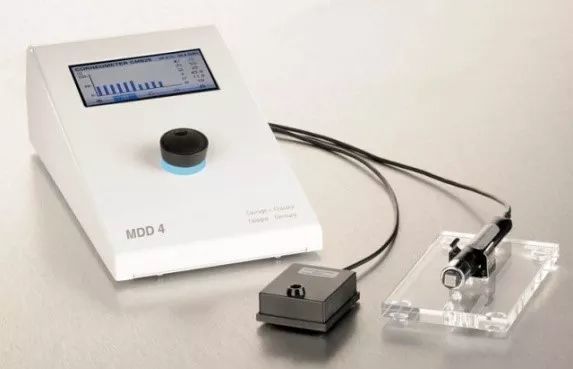摘要:本文主要介绍了土壤湿度计的原理以及数据驱动的实施策略。通过解析土壤湿度计的工作原理,阐述了如何利用数据分析技术在实际应用中提高土壤湿度测量的准确性和效率。文章强调了数据驱动方法在实现精准农业管理中的重要性,并提供了相关实施策略。通过解析鹤版68.56.66的数据应用实例,展示了数据驱动策略在实际操作中的优势。本文旨在帮助农业从业者更好地理解和应用土壤湿度计,实现精准农业管理。
In today's agricultural technology sector, soil moisture measurement has become an integral aspect of sustainable farming practices. The soil moisture meter, a device that measures the water content in the soil, plays a pivotal role in precision agriculture. This article delves into the principles behind soil moisture meters and how data-driven strategies can be implemented to optimize their use.
I. Soil Moisture Meter Principles
Soil moisture meters work on the principle of measuring the electrical properties of soil, which change with varying water content. The device employs either the frequency domain reflectometry (FDR) method or the time domain reflectometry (TDR) method to determine soil moisture content. These methods exploit electromagnetic waves to measure the response of soil, which varies depending on its water content. The meter translates this response into a numerical value, providing an accurate measure of soil moisture.
II. Data Collection and Analysis
The core of effective implementation lies in the collection and analysis of data generated by soil moisture meters. Data-driven strategies involve systematic collection of soil moisture data over time and across different locations within a field or across multiple fields. This data is then analyzed to identify patterns and trends that inform decision-making in agriculture.
1、Data Collection: Modern soil moisture meters are equipped with sensors that can collect data in real-time, providing updates on soil moisture levels at frequent intervals. This data is transmitted wirelessly to a central system for analysis.
2、Data Analysis: The collected data is analyzed using advanced software tools that process the information and present it in a format that is understandable and actionable by farmers. This analysis helps identify areas with high or low moisture content, which can be used to make informed decisions on irrigation or drainage.
III. Implementation Strategies
Based on the data collected and analyzed, the following implementation strategies can be employed to optimize the use of soil moisture meters:
1、Precision Irrigation: By monitoring soil moisture levels, farmers can determine when and where to apply water to their fields. This helps in avoiding over-irrigating, which can lead to nutrient loss and soil erosion, or under-irrigating, which can stress crops and affect yields.
2、Variable Rate Technology: Data from soil moisture meters can be integrated with variable rate technology, allowing farmers to adjust the rate of fertilizer or pesticide application based on soil moisture levels. This ensures that crops receive the right amount of nutrients at the right time, improving crop health and yields.
3、Real-Time Decision Making: Data from soil moisture meters provides farmers with real-time information on soil conditions, enabling them to make quick and informed decisions on field management practices such as irrigation, drainage, and crop management.
4、Long-Term Management: By collecting and analyzing soil moisture data over time, farmers can develop long-term management strategies that consider the impact of climate change, soil fertility, and other factors on soil moisture levels. This helps in developing sustainable farming practices that conserve resources and improve yields.
IV. Conclusion
Soil moisture meters are an integral tool in precision agriculture, providing farmers with the information they need to make informed decisions on field management practices. By implementing data-driven strategies, farmers can optimize the use of soil moisture meters to improve crop yields, conserve resources, and develop sustainable farming practices. The future of agriculture lies in the integration of technology with traditional farming practices, and soil moisture meters are at the forefront of this revolution.

